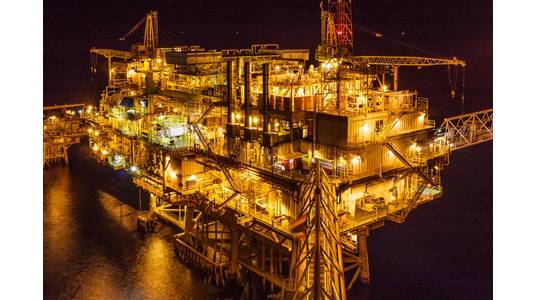
For any new offshore oil and gas project, calculating costs is key. Operators must assess both up-front capital expenditure (capex) as well as expected ongoing operational expenditure (opex) over the life of the project and weigh these figures against expected returns to ultimately determine if the development is financially viable.
However, many companies don’t calculate costs accurately because they often fail to see the bigger picture when analyzing opex, says US-based Solomon Associates.
Solomon, which describes itself as a “performance improvement company for the global energy industry”, says many companies calculate opex as a percentage of capex which doesn’t provide the most accurate cost estimate.
“Companies also lack consistency in their estimation methodologies, have limited data to develop statistically significant models, and in some cases lack data representative of the complexity of the new development. As a result, their cost calculations are often inaccurate,” Solomon consultants told Offshore Engineer.
Aiming to help clients solve these issues, Solomon developed the Upstream New Projects OpEx Estimator, a software application that leverages the company’s unique and expansive empirical database and methodology to produce better informed and more precise opex predictions.
Other factors at play
Opex, more so than capex, is heavily affected by factors beyond the technical configurations of a common estimation model, Solomon says. A company’s operational philosophy, including its development plan approach, maintenance strategy and use of technology, for example, has a vital impact.
Solomon says it draws from 25-plus years of proprietary benchmarking data containing elements of operational philosophy on facility repair and maintenance, crew operations, well servicing, chemical usage, energy consumption, transportation, and health, safety and environment policies. This information, along with the technical details of a field and real operating cost data, forms the foundation of Solomon’s normalization models.
Solomon’s normalization models are based on empirical field operations data from more than 5,000 unique oil and gas assets around the globe, collected directly from asset operators and jointly validated, the Solomon representatives say.
“This database is not your common cost database on equipment, material, fabrication and labor. It has detailed observed operating costs, operating field and facility technical data, production and field consumption volumes and operational philosophy data,” they explain.
“Further, Solomon’s normalization model includes statistically significant relationships of underlying ‘drivers’ ensuring that all technical aspects are accounted for.”
How the estimator works
The client starts by filling out a detailed technical information sheet on field setup, reservoir characteristics (such as producing formation, formation depth and producing properties), well configuration, production estimates, logistics setup and labor.
Then, based on this input, the OpEx Estimator produces an opex estimation based on benchmarking data using the normalization model to adjust results to the new asset configuration.
An OpEx model is built for the expected lifetime of the asset, per year of operation. The model is divided into the cost drivers such as maintenance, well service, logistics (personnel transportation and vessels), labor, energy, chemicals and general and administrative costs.
The web application allows the estimations to run with a minimum level of inputs. As the project evolves and more facilities and reservoir data become available, users can create more technical cases within the same project to easily compare the changes on the opex estimation.
Solomon says it is working with major operators, mid-sized companies and national oil companies “who see significant value in more accurate opex estimation for their new projects”, with a number of high-profile evaluation projects underway.
One major operator that used the Solomon OpEx Estimator tool to calculate the cost of a new project arrived at an opex estimate very different from the company’s internal evaluation which was based on historic cost information from existing assets. The two estimates showed sharp differences in the capacity and number of compressors and power generators, and the client was able to reevaluate and maximize the value proposition of their project. In addition, the company reassessed the economic limit of the new asset as well as the impact of additional reserves on the company’s portfolio.
“By basing the opex budget on real world benchmarking data, the operator has the opportunity from day one to build their opex budget based on ‘operational excellence’. Operational excellence is generally not about achieving the lowest cost, but securing the balance between maximum production, low cost, high reliability and asset integrity. By understanding the asset lifecycle opex derived from their early decisions on the facilities’ design, operators are able to maximize the value and ROI of their investments.”
Note: quotes in this article are attributed to three consultants from HSB Solomon Associates LLC, who answered Offshore Engineer’s questions jointly: